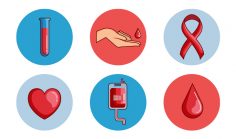There is no test for RLS A diagnosis of RLS is based on these four criteria:
- You feel a strong urge to move your arms, legs, or torso–and you may feel an unpleasant sensation if you don’t move.
- Your symptoms start or worsen when you are sitting, lying down, or resting.
- Your symptoms are worse in the night or evening than in the day.
- Your symptoms go away, at least for the time being, if you get up and move around.
Your doctor also needs to check for other illnesses that may be the cause of your symptoms.
At your doctor’s visit, your doctor will ask you questions about your symptoms, including when they happen and whether anything triggers symptoms. Your doctor may also ask about your sleep patterns and your family history.. The visit will also include a physical and neurological evaluation. Your doctor may request tests, such as:
- A blood test to check your iron level
- An overnight sleep study
Diagnosing RLS can be harder in children, who may not have the vocabulary to describe their symptoms. RLS in kids is sometimes confused for attention deficit disorder or “growing pains.”













